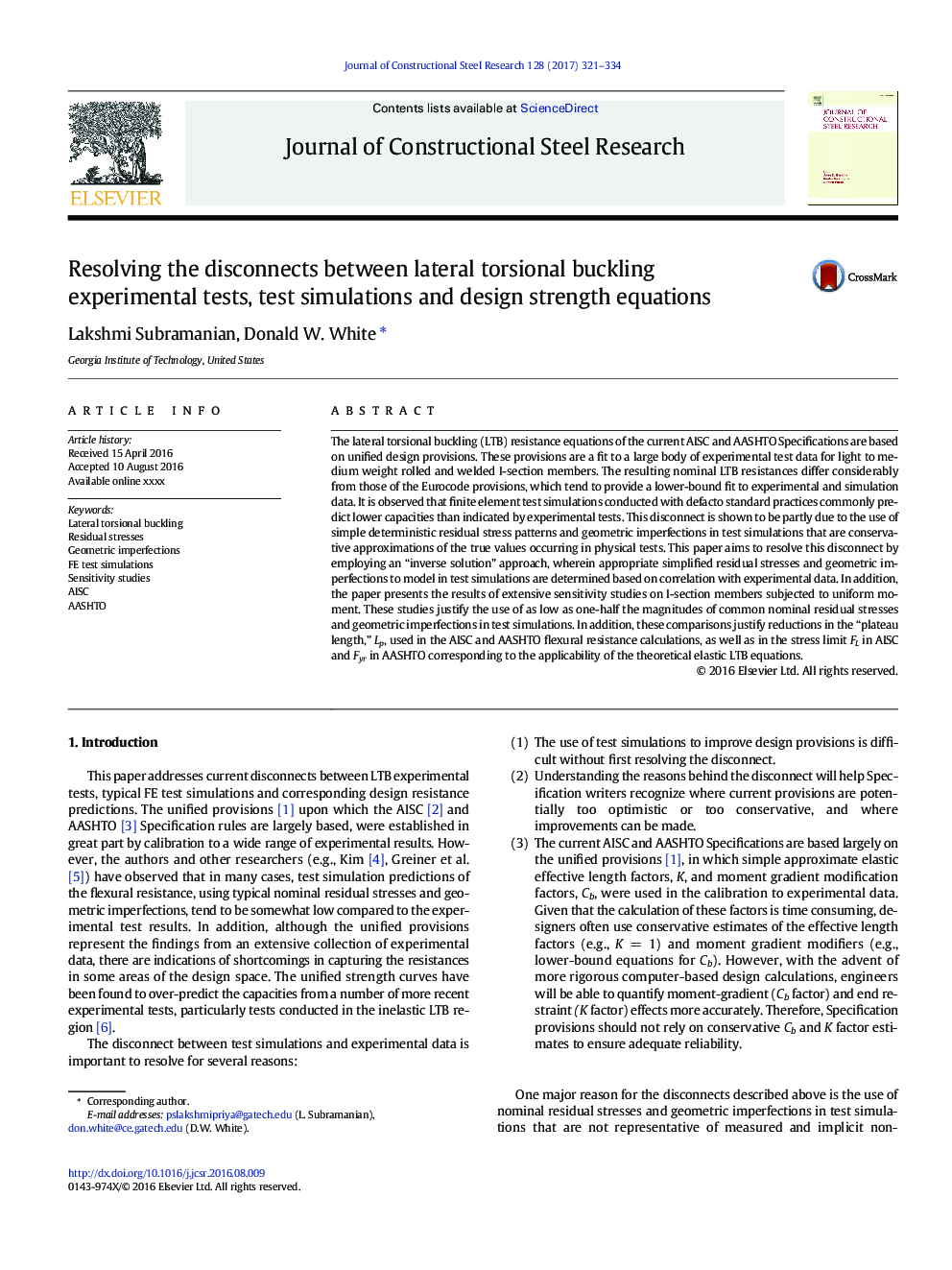| Article ID | Journal | Published Year | Pages | File Type |
|---|---|---|---|---|
| 4923595 | Journal of Constructional Steel Research | 2017 | 14 Pages |
Abstract
The lateral torsional buckling (LTB) resistance equations of the current AISC and AASHTO Specifications are based on unified design provisions. These provisions are a fit to a large body of experimental test data for light to medium weight rolled and welded I-section members. The resulting nominal LTB resistances differ considerably from those of the Eurocode provisions, which tend to provide a lower-bound fit to experimental and simulation data. It is observed that finite element test simulations conducted with defacto standard practices commonly predict lower capacities than indicated by experimental tests. This disconnect is shown to be partly due to the use of simple deterministic residual stress patterns and geometric imperfections in test simulations that are conservative approximations of the true values occurring in physical tests. This paper aims to resolve this disconnect by employing an “inverse solution” approach, wherein appropriate simplified residual stresses and geometric imperfections to model in test simulations are determined based on correlation with experimental data. In addition, the paper presents the results of extensive sensitivity studies on I-section members subjected to uniform moment. These studies justify the use of as low as one-half the magnitudes of common nominal residual stresses and geometric imperfections in test simulations. In addition, these comparisons justify reductions in the “plateau length,” Lp, used in the AISC and AASHTO flexural resistance calculations, as well as in the stress limit FL in AISC and Fyr in AASHTO corresponding to the applicability of the theoretical elastic LTB equations.
Keywords
Related Topics
Physical Sciences and Engineering
Engineering
Civil and Structural Engineering
Authors
Lakshmi Subramanian, Donald W. White,
